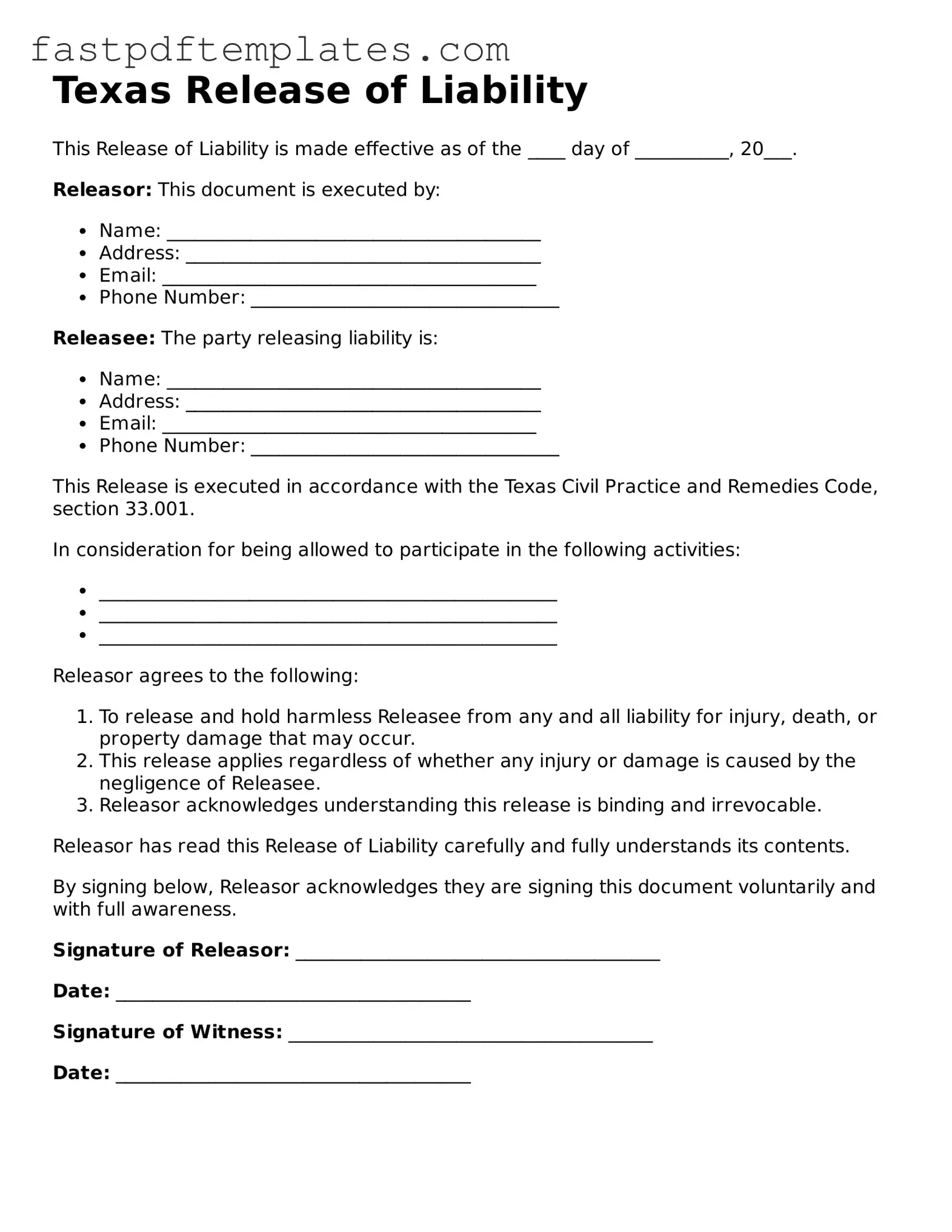The Texas Release of Liability form is similar to the Waiver of Liability form, which is commonly used in various recreational activities. Both documents aim to protect organizations and individuals from legal claims by requiring participants to acknowledge the risks involved. By signing this waiver, participants agree not to hold the organizers responsible for any injuries or damages that may occur during the activity.
Another document that shares similarities is the Hold Harmless Agreement. This agreement is often used in contracts between two parties, where one party agrees to assume the liability for any damages or injuries that may arise. Like the Release of Liability, the Hold Harmless Agreement protects one party from legal claims by shifting the responsibility to the other party.
The Indemnity Agreement is also comparable to the Texas Release of Liability form. This document requires one party to compensate another for any losses or damages incurred. Both forms serve to limit liability and ensure that one party does not face financial burdens due to the actions of another.
The Consent Form, often used in medical settings, is another related document. It requires individuals to give permission for specific activities, such as medical procedures or participation in research studies. While it focuses on informed consent, it also often includes language that limits liability for the providers involved, similar to the Release of Liability.
The Participant Agreement, commonly used in sports leagues, bears resemblance to the Texas Release of Liability form. This document outlines the expectations and responsibilities of participants while also including a waiver of liability. Participants agree to follow the rules and acknowledge the inherent risks associated with the sport.
The Adventure Activity Waiver is another document that functions similarly. Used by companies offering adventure sports, this waiver informs participants of the risks involved and limits the company's liability for injuries. By signing, participants acknowledge the dangers and agree not to hold the company accountable for accidents.
The Event Liability Waiver is also akin to the Texas Release of Liability form. It is often used for events such as festivals or concerts. Attendees sign this waiver to acknowledge the risks associated with large gatherings, thereby protecting event organizers from potential lawsuits related to injuries or damages that may occur during the event.
The Rental Agreement often includes a liability waiver for rental properties or equipment. When renting, individuals may be required to sign a document that limits the owner's liability for injuries or damages that occur while using the property or equipment. This is similar to the Texas Release of Liability in its intent to protect the property owner.
The Sports League Waiver is another document that aligns closely with the Texas Release of Liability form. Used by amateur sports leagues, this waiver is signed by players and parents, acknowledging the risks of participation. It serves to protect the league from lawsuits resulting from injuries sustained during games or practices.
Finally, the Volunteer Waiver is similar in nature to the Texas Release of Liability form. Organizations that utilize volunteers often require them to sign a waiver that limits the organization’s liability for injuries sustained while volunteering. This document helps ensure that volunteers understand the risks involved while protecting the organization from potential claims.
